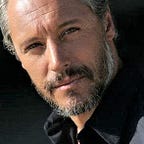No Age Limit on Running
Experts encourage lifelong exercise
For many of my running friends, the question of when to hang up their shoes often looms as they get older. However, according to sports medicine physician Adam Tenforde, there is no definitive age limit for running, as long as you listen to your body’s signals.
Tenforde, the director of running medicine at Spaulding Rehabilitation Hospital and a former All-American long-distance runner himself, believes that running can be done safely over the course of a lifetime, but he acknowledges that pain and discomfort are sometimes inevitable aspects of the ageing process.
Understanding the pain
When it comes to assessing pain during running, Tenforde suggests considering a few key factors. If the pain improves with activity, it’s often a sign of a less significant injury and a “warm-up phenomenon” though, if the pain builds during movement, it could indicate cumulative stress and damage to tissues, which may require modifying the running routine.
Additionally, if the pain causes biomechanical changes or compensatory movements, it’s a red flag that the source of the pain needs to be identified and addressed.
The joint damage myth
One common misconception about running is that it’s harmful to joints. On the contrary, Tenforde notes that research has not supported this idea. In fact, running and loading can lead to adaptations in muscles, tendons, bones, and joints that are beneficial. Cartilage, for instance, requires load to maintain its normal architecture and strength.
Conversely, a lack of physical activity is associated with an increased risk of conditions such as obesity, heart disease, and diabetes.
Finding the right balance
While there is no precise mileage threshold that guarantees injury, some studies have suggested that running more than 20 miles per week may increase the risk of bone stress injuries. However, Tenforde acknowledges that many runners enjoy exceeding that distance, especially when training for races.
Ultimately, it comes down to a risk-benefit analysis. Some runners may choose to continue running despite having conditions like knee or hip arthritis, in which case the goal is to optimize joint mechanics and minimize pain and inflammation.
Running and the concept of ageing
As the discussion shifts from running to the broader topic of aging, experts are calling for a change in the way society views this natural process. Instead of focusing on disability, the emphasis needs to shift towards ability, health, and greater participation in economic and social activities.
Caitlin Coyle, director of the Center for Social & Demographic Research on Aging at UMass Boston, highlights the powerful impact of language in shaping attitudes about ageing. She notes that many people engage in “internalized ageism” through self-talk that reinforces negative stereotypes, such as “feeling too old” or “being unable to do certain activities.” I personally subscribe to the view “talk old, get old”.
Encouraging healthy ageing
To support healthy ageing, experts stress the importance of prevention, risk-factor reduction, and involvement in meaningful activities such as work, volunteerism, family relationships, or religious organizations.
New York City Health Commissioner Ashwin Vasan, a Harvard T.H. Chan School of Public Health graduate, emphasizes the need to look beyond avoiding negative consequences and focus on “aspirational, forward-looking indicators of healthy ageing.”
Andrew Scott, an economics professor at the London Business School and author of “The Longevity Imperative,” adds that ageing should be viewed as a process relevant to all ages. Proper management of this process can help individuals make the most of their longer lives.
Addressing inequalities
Now, the trend toward healthier ageing is not universal. Black and brown communities experience disproportionately higher rates of premature death before the age of 65, highlighting the importance of addressing preventative health in these communities in the decades leading up to that age.
Vasan emphasizes the need to create a “civic expectation that healthier, longer lives are more equitably experienced,” noting that “the equity agenda is central to the life expectancy agenda.”
As we grapple with the realities of an ageing population, experts encourage a shift in perspective, that is, one that celebrates the abilities and potential of older adults, promotes healthy lifestyles, and addresses inequalities in ageing outcomes.
If we can develop this mindset, I believe that running and other forms of exercise can be enjoyed at any age, with the guidance of medical professionals and a commitment to listening to one’s body.
References:
How old is too old to run? — Harvard Gazette
America’s graying. We need to change the way we think about age. — Harvard Gazette
Subscribe to get my free weekly Newsletter, Healthwise, on Substack. All things Health, Wellness and Science
Click here: Healthwise: Exploring the Frontiers of Wellness and Science | Tom Kane | Substack
